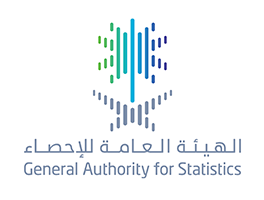
50 طالبا وطالبة ينخرطون في برنامج "التدريب التعاوني" للهيئة العامة للإحصاء" للفصل الدراسي الحالي
50 Students Participate at the General Authority for Statistics “Cooperative Training Program" this semester
The General Authority for Statistics has implemented the “cooperative training program’’ with the participation of 50 students from educational institutions during this semester for many majors including economics, statistics, accounting, media, mathematics, information technology, administration and law. The program provides the trainees with the opportunity to apply for a number of academic courses that students have taken within their educational institutions in the labor market. within a period of time to be counted in the academic graduation program. The training program, which runs from hours to four months, aims to help students gain the practical skills and efficiency in their fields of study in their university, allowing them to develop many of their practical experiences that may differ in nature from those gain over during periods of study. The training period helps colleges and universities to evaluate the academic preparation of their students through the report of their Cooperative Training Program, statements and job evaluation reports given by the direct supervisor to the trainee at the General Authority for Statistics. The "Cooperative Training" program aims to attract outstanding students from the newly graduated for the General Authority for Statistics. The program also aims to strengthen the relations between the General Authority for Statistics and the educational institutions in the public and private sectors.
The General Authority for Statistics aims to do a couple of programs and projects to activate the academic sector considering it one of the four basic components of the statistical sector besides the Authority and the statistical units in government agencies and the private sector. These programs goal is to participate with fields that are related to the statistical work and the future plan for statistics in the kingdom and its transformation program.
And also to cooperate with universities to evaluate or develop the products of the statistical work. The Authority has given a couple of programs to the Saudi universities during the last period.

" إحصاءات السعودية " وبـ (3) قيادات إحصائية وتقنية عضو في مجموعة العمل العالمية للبيانات الضخمة للإحصاءات الرسمية
After joining the program of international comparisons and experts of tourism satellite accounts, and to confirm its role in the international statistics map
“Saudi Statistics” is a member in the Global Work Group on big data for official statistics
After being a board member in the international comparison program and the international experts team for developing tourism satellite accounts 2017, Saudi Arabia, represented in the General Authority for Statistics (GaStat), has become a member in the Global Work Group (GWG) on big data for official statistics which pertains to the United Nations. This group includes 22 countries and 9 international authorities. Saudi Arabia has decided to be a member in this group to reflect the positive role of GaStat in the UN different statistical programs. It also wants to show its progress in the field of big data. GaStat is represented in this group by three statistical and technical leaders who are considered experts in big data; dr. Mohammed Alahmed, vice president of statistical innovation and customer service, Mr. Khalid Aldalqan, deputy of information technology, and Dr. Aseel Almansour, director-general of statistical innovation department.
Dr. Fahad bin Sulaiman Altekhaifi, GaStat president, asserted that Saudi Arabia has decided to be a member in the global work group on big data for official statistics to confirm the effective role of Saudi Arabia in the international statistics map. This membership will reflect the results of the Saudi statistical sector’s strategic transformation which Saudi Arabia is really concerned about and support for its role in enhancing the national development decisions. He added, joining this group will enhance the role of Saudi Arabia in the field of big data internationally. The participation of GaStat in this group is represented through capacity building and raising awareness about the importance of big data, in addition to joining the global platform for data, services, and applications.
Altekhaifi indicated that the participation of those three national leaders among an elite of worldwide data and statistics experts under the umbrella of the United Nations Statistical Commission is considered an opportunity to benefit from the group works’ outputs. It will contribute in developing the use of big data in Saudi Arabia as these data are one of the very important recent sources of information, in addition to the field surveys and register data. Moreover, it will have an essential role in addressing issues pertaining to methodology, quality, technology, data access, legislation, privacy, and management. It will also pave the way for collaborations with the most distinct statistical organizations such as the international institutions, data producers, and big data experts. This might increase the quality of statistical products provided by GaStat to support decision and policy makers. Furthermore, the group works and results will collaborate in raising the level of information exchange about the big data projects in the statistical community.
It is worth mentioning that the creation of the Global Working Group (GWG) on Big Data for Official Statistics was agreed at the 45th session of the UN statistical commission which was held last November. The group work aims at investigating the benefits and challenges of Big Data, including the potential for monitoring and reporting on the sustainable development goals. In addition to Saudi Arabia, the Global Work Group includes 21 representatives and some international organizations: Eurostat, GCC-Stat, ITU, OECD, UNECE, UNESCAP, UNSD, UN Global Pulse, World Bank
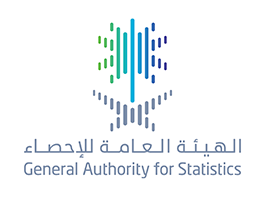
الهيئة العامة للإحصاء تٌصدر الرقم القياسي لأسعار العقارت للربع الرابع 2017
The Indicator Covers Three Main Sectors (Housing, Commercial, Agricultural)
GaStat Releases Real-Estate Prices Index for the 4th Quarter 2017
The General Authority for Statistics (GaStat) released on Sunday, 11 Jumada Al-Awal 1439H corresponding to January 28, 2018, its quarterly indicator for the General Index of the Real Estate Prices Q4 2017 in Saudi Arabia and published it on its official website www.stats.gov.sa.com .
Furthermore, the indicator is based on the data records about real-estate’s transactions available at the Ministry of Justice, and it is an important tool to support economic and statistical decision makers regarding the changes of property prices and future forecasts during different periods of time. The indicator covers three main sectors consisting of several types of real estate: housing sector which includes the followings (plot of land, building, villa, apartment and house), commercial sector includes (plot of land, building, exhibition, commercial center or shop), agricultural sector with one category which is the agricultural land.
On the other hand, the indicator recorded a decline amounted to (3.2%) compared to the same quarter last year (Q4 2016). The indicator attributed this decline to the decrease of the main sectors composing it: the housing sector (2.2%), the commercial sector (5.7%) and the agricultural sector (0.6%).
Moreover, the indicator edged down (0.3%) compared to the previous quarter (Q3 2017) reaching (84.6%) in the fourth quarter of 2017 compared to (84.9%) for the previous quarter. This decline is attributable to the main sectors composing it where they witnessed varying degrees of decline: (0.2%) for the housing sector, (0.7%) for the commercial sector and (0.1%) for the agricultural sector.
It is worth mentioning that the release of the Index of Real Estate Prices for Q4 2017 came along with the introductory meeting of Jeddah Chamber of Commerce and Industry, this meeting was within the Authority's plan to raise the statistical awareness of all its customers in which a number of meetings were held previously to discuss Real Estate Price Index in Riyadh and Dammam last year.
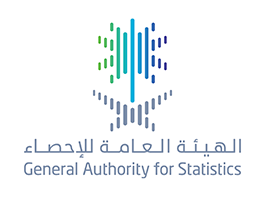
الهيئة العامة للإحصاء تُصدِر نتائج مسح المساكن 2017
It Shows the Housing Characteristics of Dwellings Occupied with Saudi Households
Housing Survey 2017 Findings Now Released by GaStat
The General Authority for Statistics (GaStat) released on Thursday, 8 Jumada Al-Awal 1439H (25 January 2018) the findings of the Housing Survey 2017, through its official website www.stats.gov.sa.com. This survey was implemented during the period (17/7 - 22/8) / 1438H) corresponding to (14/4 - 18/5/2017).
Furthermore, it was prepared in cooperation with the Ministry of Housing and it shows the housing characteristics of dwellings occupied with Saudi households. On other hand, Housing Surveys are one of the most important data sources necessary for development planning in the economic and social fields in general and for housing initiatives in particular, both at the national and local levels. Moreover, Housing Surveys aim to: provide data about the dwellings occupied with households at the administrative level of the Kingdom of Saudi Arabia, study the influence of the surrounding environment and the housing characteristics, create database for housing in order to provide the requirements of the government and the needs of the planners and researchers from the main data about the housing characteristics required by the development plans, provide data and indicators on housing periodically to measure changes in housing characteristics over time and to make local, regional and international comparisons and measure the improvements and the growth in the housing fields by type of dwelling, age of dwelling occupied with the household.
In addition, (owned) dwellings and occupied with Saudi households amounted to (49.91%) according to the Housing Survey 2017 findings. (Owned) dwellings that were built by using non-reinforced concreate (clay, stone, bricks, slabs) are excluded from this, in which their rate recorded a decrease down from (13.38%) in 2016 to nearly (10%) in 2017. Furthermore, (rented) dwellings and occupied with Saudi households represent (38%), and (1.69%) for dwellings provided by employer. It is worth mentioning that findings of this survey did not show the individuals’ ownership of dwellings rate but it discusses the housing characteristics such as: type of tenure of the household’s dwelling included in the field survey.
Additionally, villas occupied with Saudi households accounted for (29.44%) of the total number of dwellings occupied with Saudi households, the percentage of apartments occupied with Saudi households was (43.67%) and (7.73%) was for floors in villas occupied with Saudi households.
On the other hand, the findings showed that the predominant material used in the construction of dwellings occupied with Saudi households was the reinforced concreate by (87.95%). Dwellings occupied with Saudi households, in which (brick) was used in its construction accounted for (11.88%).
In terms of household energy, the findings showed that the percentage of dwellings occupied with Saudi households that depend on the public water network as a source of water recorded (74.28%) of the total number of dwellings occupied with Saudi households, and (99.8%) of dwellings depend on the electricity public network as its main source. In addition, (7.88%) was for dwellings occupied with Saudi households for less than (5) years, (25.38%) was for dwellings occupied with Saudi households between (5 and less than 10 years), and dwellings occupied with Saudi households between (10 to 20 years) accounted for (30.09%).
Moreover, GaStat indicate that census surveys conducted every ten years depend on the comprehensive inventory of all dwellings. However, housing surveys depend on the sampling method of selected households chosen in a scientific manner. The survey form includes accurate details to support housing initiatives in which it allows the possibility of studying housing characteristics in a more comprehensive and detailed manner. The findings reveal the housing characteristics of the dwellings occupied with Saudi households at the administrative regions of the Kingdom. Many indicators can be extracted through this survey, such as: dwelling type, approximate age of the dwelling, building material, flooring material, type of possession, source of water, drinking water, source of electricity for the dwelling and other housing indicators related to the dwelling.
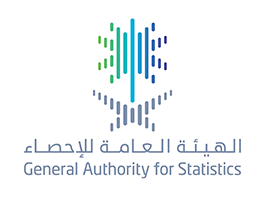
الهيئة العامة للإحصاء : (2.9 %) نسبة انتشار الإعاقة ذات الصعوبة ( البالغة ) بين السكان السعوديين
A specialized survey, measuring the spread of disability, contains all disability statistics details
GaStat: (2.9%) of Saudi population have disability with (extreme) difficulty
To get real statistical indicators that reflect the disability spread rates in Saudi and the disability categories in terms of difficulty degrees and spread among society people to be a reference for developing policies, making decisions, providing proper services for persons with disability, and fulfilling the needs of planners, researchers, and those who are interested in disability studies, the General Authority for Statistics (GaStat) has issued a report containing the results of “ persons with disability survey 2017”. When defining disability and classifying its difficulty degrees, GaStat has relied on the elaborated definition of Washington Group on Disability Statistics which contains all difficulty degrees of disability: mild, severe, and extreme. The survey results indicated that (2.9%) of Saudi population have disability with extreme difficulty.
According to the survey results, Riyadh region has registered a disability rate of (25.13%) which is the highest rate of disabled persons compared to the other Saudi regions. However, Najran region registered the lowest rate of disability with (0.87%). The survey results have also showed that the most spread difficulty among disabled Saudi population who only have one difficulty is the visual impairment. Persons with disability who suffer from visual impairment have registered (46.02%) among all Saudi disabled population with different degrees: mild (67.8%), severe (28.5%), and extreme (3.7%). As for the most spread difficulties among Saudi disabled population who suffer from multiple difficulties, physical difficulties have registered the highest rate with (29.13%) with different degrees: mild (54.07%), severe (29.22%), and extreme (16.71%).
It is worth mentioning that persons with disability survey includes many tables that are already published on the website. More than 40 detailed tables that include a large number of statistical data such as disability rates with its different degrees and categories, disabled population structure regarding their age and type, educational status, and occupational status.

متحدث "الإحصاء" : معدلات البطالة تتم وفق معايير دولية، وتنشرها الهيئة بمختلف قنوات النشر على موقعها الرسمي وحسابات التواصل الاجتماعي
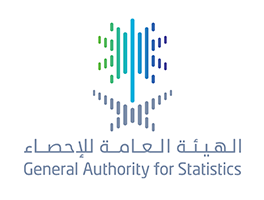
الهيئة العامة للإحصاء : استقرار في معدل البطالة للسكان السعوديين عند مستوى ( 12.8 % ) وانخفاض معدل البطالة الإجمالي ليصل ( 5.8% )
Within the Results of the Labor Market Bulletin for the Third Quarter of 2017
The General Authority for Statistics: Stability in the Unemployment Rate of the Saudi Population at (12.8%) and a Decline in the Total Unemployment Rate to Reach (5.8%)
The General Authority for Statistics (GaStat) published on its official website www.stats.gov.sa the Labor Market Bulletin for the third quarter of 2017, which provides comprehensive data and indicators on the labor market in the Kingdom from the estimates of the labor force survey conducted by the Authority on a quarterly basis, in addition to the labor market data from the administrative records of the relevant entities (Ministry of Labor and Social Development, Ministry of Civil Service, General Organization for Social Insurance, Human Resources Development Fund and National Information Center).
The results of the bulletin for the third quarter of 2017 showed stability in the unemployment rate of the Saudi population at its previous level during the second quarter of 2017, where it stabilized at (12.8%), (7.4%) for males and (32.7%) for females, and a decline in the total unemployment rate (15 years and above) compared to the second quarter of 2017, where it reached (5.8%) in this quarter (3.2%) for males and (21.1%) for females.
The total number of workers from the data of administrative records in the Kingdom of Saudi Arabia reached (13,758,064) indivisuals, the total number of Saudis jobseekrs from the records of administrative reached (1,231,549) individuals, (190,822) are males and (1,040,727) are females. The highest percentage of Saudis jobseekers in the age group (25-29) was represented by 31.3%. Moreover, the results showed that nearly half of the Saudi jobseekers hold Bachelor degrees and their percentages reached (45.8%).
According to the administrative records of the relevant entities, the total number of work visas issued reached 509,180. (22.3%) for the public sector, (37.8%) for the domestic sector and (39.9%) for the private sector.
The bulletin included a large number of detailed data on workers according to the regulations they are subject to, and according to the nationality, gender, age, administrative region and educational level, as well as data on job seekers, average monthly wage, working hours and domestic workers.
On the other hand, the official spokesman of the General Authority for Statistics (GASTAT), Mr.Tayseer Al-Mafarj, clarified that there is a difference between job seekers and unemployed. The "unemployed" according to the Labor Force Survey are the individuals (15 years and above) who were jobless during the period of the time reference (the survey period): the previous week of the household visit and have been looking for a job seriously during the four weeks prior to the household visit (they have at least taken one way to look for a job). This includes those who did not search for work during the four weeks prior to the household visit because they were waiting for a job or starting their own business in the coming period, where they had already been looking for work before the time reference period and at the same time they were able to work and were ready to join it (If available), during the week preceding the household visit.
Additionally, the definition of job seekers is the Saudi individuals (males or females) enrolled in the job search programs of the Ministry of Civil Service (Jdarah or Saed) and the Human Resources Development Fund (Hafiz). And they register their personal data, qualifications, practical experiences and CVs through an electronic system.
It is worth to mention that job seekers in the administrative records are not subject to the internationally recognized standards and conditions of unemployment approved by the ILO and therefore are not considered to be unemployed. Hence, not every job seeker is considered unemployed, he may be looking for work and is working in another job, this is the case in job seekers in government entities who are working, for example, in the private sector.

الجهات الحكومية تبدأ بتطبيق التصنيف الوطني للأنشطة الاقتصادية (ISIC4) منتصف الشهر الحالي
The General Authority for Statistics (GASTAT) Held an Introductory Workshop and Issued the Unified Guide
Government Entities Start to Implement the National Guide for Economic Activities (ISIC4) in the Middle of the Current Month
The General Authority for Statistics (GASTAT) explained that it has completed the preparations for enabling the government entities related to economic activities to implement the "National Classification for Economic Activities", the classification was taken from the International Standard Industrial Classification of All Economic Activities, the forth version (ISIC4), and was issued by the United Nations Economic and Social Council. And it is considered as an approved Classification for Economic Activities in the Kingdom of Saudi Arabia starting next Monday 14 Rabi Thani, 1 January 2018.
The official spokesman of the General Authority for Statistics (GASTAT), Tayseer Al-Mafraj, confirmed that the Authority has held several workshops for the relevant entities during the past period of time and prepared a unified guide and an electronic room for operations and communication in preparation for the start of the adoption of the National Classification for Economic Activities that can be defined as the way in which counting units can be collected according to a serial order and defined by homogeneous groups with a view to creating a general framework for comparison of statistical data at the local, regional and international levels. He also pointed out that the data of economic activity can be divided according to the guide prepared for this to specific levels in a manner similar to the characteristics of economic activities classified in one rank.
The official spokesman added that the implementation of the Unified Classification for the Economic Activities aims at creating a general framework for comparing statistical data at the local, regional and international levels, and providing a set of statistical data classified according to the economic activity. In addition, the implementation of the Unified Classification for Economic Activities contributes to the organization and restructuring of all sectors, supports the project of electronic connectivity between different entities, improves the quality of administrative records data of the relevant entities, and provides a comprehensive framework of economic activities to facilitate the handling of descriptive formulas automatically.
It should be noted that the original version of the Classification was adopted in 1948. Most countries have applied this Classification as their national classification to become an important tool for comparing statistical data on economic activities at the international level. The first version (ISIC_1) of the International Standard Industrial Classification of Economic Activities was issued in 1958, the second version (ISIC_2) was issued in 1968 and the third version (ISIC_3) was issued in 1990. Finally, in 2006, the United Nations Economic and Social Council adopted the Fourth Amendment to the International Standard Industrial Classification (ISIC4). The General Authority for Statistics (GASTAT) uses the Classification in all its economic and social products, and follows up the updates on the classification and recently it has been authorized to enable the government entities to apply it as an approved Classification for Economic Activities in the Kingdom.
